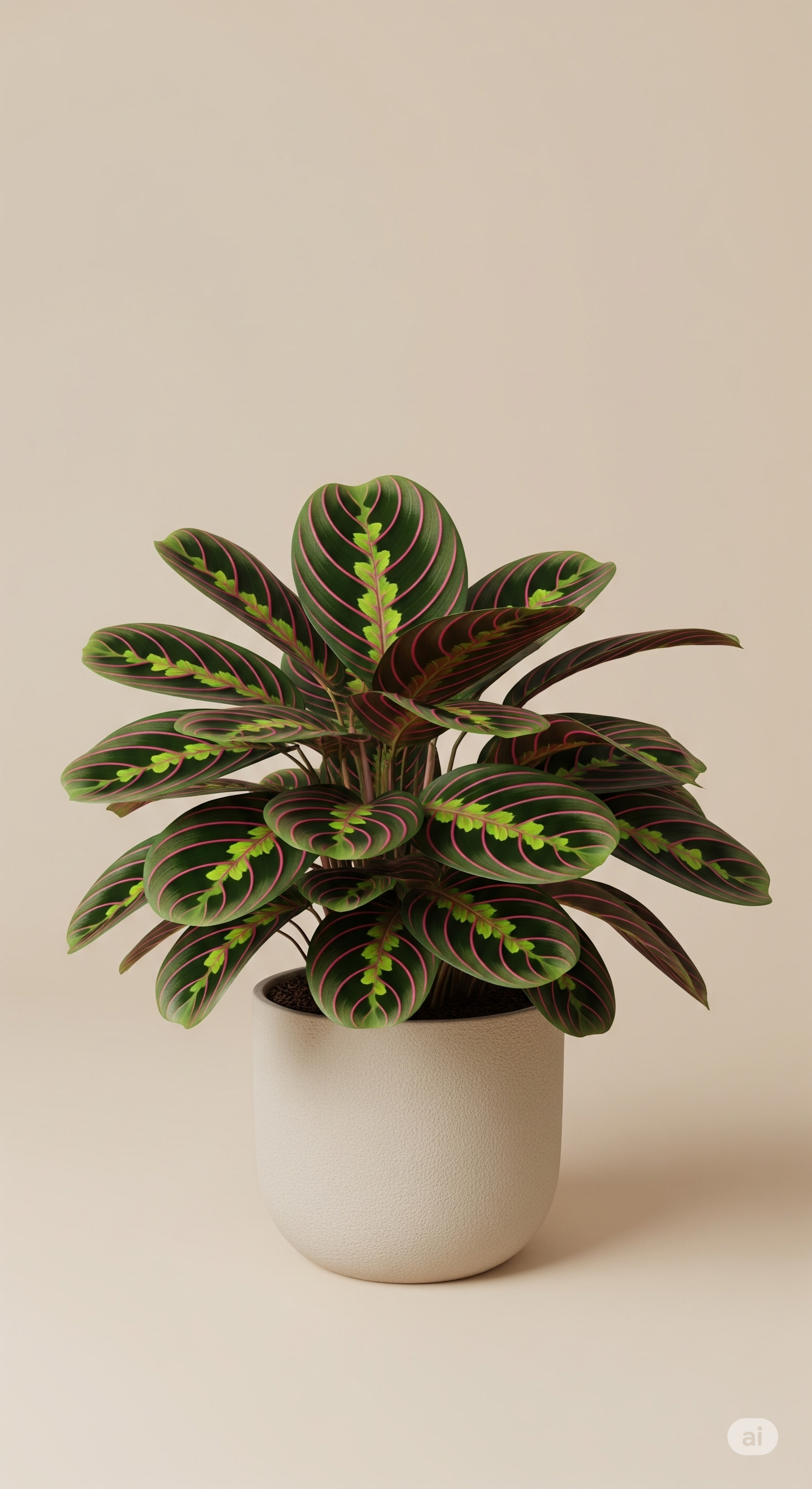Prayer Plant

Scientific name: Maranta leuconeura
☘️ Toxicity: Safe for cats
☀️ Ideal light: Medium, diffused light
💧 Watering: Frequent; keep the soil slightly moist
The Prayer Plant is a tropical species admired for its colorful foliage and unique behavior. Its leaves raise and fold at night — a phenomenon called “nictinasty” — resembling hands in prayer, which gives the plant its popular name. Vibrant, ornamental, and safe for cats, it’s an excellent choice for indoor spaces.
Essential care
- Light: Prefers medium, indirect light; direct sun can burn or fade the leaves.
- Water: Keep soil consistently moist but not soggy; water when the top starts to dry.
- Humidity: Loves high humidity; mist regularly or use a humidifier.
- Substrate: Light, well-draining, and rich in organic matter (peat, perlite, and pine bark mix well).
- Temperature: Ideal between 18–26 °C (64–79 °F); sensitive to cold air and drafts.
Common problems
- Wilting leaves: Often caused by dry air, excess light, or underwatering.
- Brown tips: Due to chlorinated water or low humidity.
- Pale leaves: A sign of insufficient light or nutrient deficiency.
Propagation
- Division: The most effective method; separate clumps during spring repotting.
- Stem cuttings: Use cuttings with 2–3 nodes and root them in water or moist substrate.
Cat safety
- Classification: Non-toxic to cats.
- Best practice: Even though it’s safe, keep it in a stable spot to protect its delicate leaves from curious paws.
💡 The Prayer Plant “moves” throughout the day, opening its leaves with the sunlight and folding them at night — a living example of plant sensitivity to its environment.
Quick checklist
- ☀️ Medium, diffused light
- 💧 Lightly moist soil
- 🌫️ High humidity
- 🪴 Light, organic substrate
- 🐾 Safe for cats